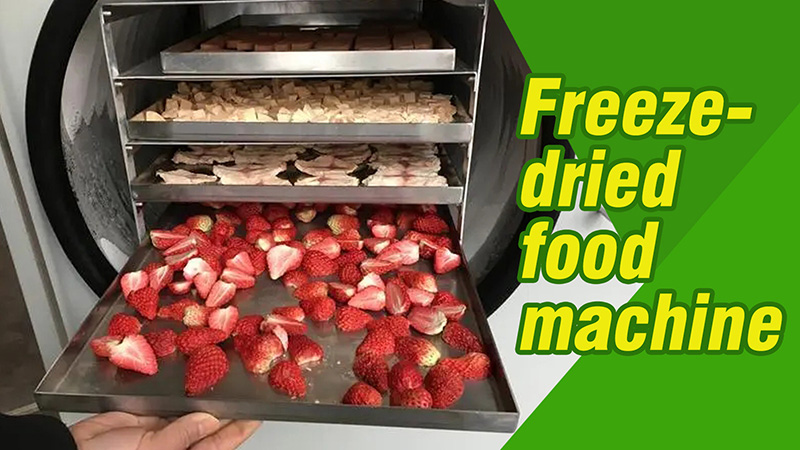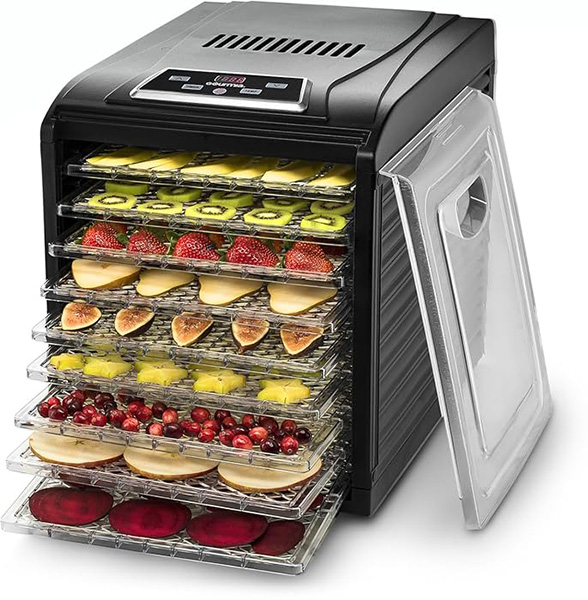
Content Menu
● Introduction to Freeze Drying Technology
● Understanding the Freeze Drying Process
● The Rise of Home Freeze Dryers
● Benefits of Using a Freeze Drying Machine for Food
● Commercial Applications of Freeze Drying Technology
● Choosing the Right Freeze Drying Machine for Food
● The Future of Freeze Drying Technology
● Tips for Successful Freeze Drying at Home
● Conclusion
● Frequently Asked Questions
>> 1. Q: How long does the freeze drying process typically take?
>> 2. Q: Can all types of food be freeze-dried?
>> 3. Q: How do freeze-dried foods compare nutritionally to fresh foods?
>> 4. Q: Is it safe to freeze dry raw meat?
>> 5. Q: How long can freeze-dried food last?
Introduction to Freeze Drying Technology
In the ever-evolving world of food preservation, freeze drying machines for food have emerged as a game-changing technology. This innovative process, also known as lyophilization, has revolutionized the way we preserve and store food, offering numerous benefits over traditional methods. From extending shelf life to maintaining nutritional value, freeze drying has become an indispensable tool in both commercial and home settings.
Understanding the Freeze Drying Process
Freeze drying is a sophisticated preservation method that removes moisture from food while maintaining its structure and nutritional content. The process involves three main steps:
1. Freezing: The food is rapidly frozen to temperatures below -30°F (-34°C).
2. Primary Drying: The frozen food is placed under vacuum, causing the ice to sublimate directly from solid to gas.
3. Secondary Drying: Any remaining moisture is removed through desorption.
This process results in food that is lightweight, shelf-stable, and easily rehydrated without losing its original flavor, texture, or nutritional value.

The Rise of Home Freeze Dryers
While freeze drying was once limited to large-scale industrial operations, the technology has now become accessible to home users. Home freeze dryers have gained popularity among food enthusiasts, preppers, and health-conscious individuals who want to take control of their food preservation process.These compact machines allow users to freeze dry a wide variety of foods, including:
- Fruits and vegetables
- Meats and seafood
- Dairy products
- Complete meals
- Herbs and spices
- Pet food
Benefits of Using a Freeze Drying Machine for Food
The advantages of freeze drying food are numerous and significant:
1. Extended Shelf Life: Freeze-dried foods can last up to 25 years when properly stored, making them ideal for long-term food storage and emergency preparedness.
2. Nutritional Retention: Unlike other preservation methods, freeze drying retains up to 97% of the food's original nutritional value.
3. Flavor Preservation: The process maintains the natural flavors of food, resulting in a product that tastes fresh when rehydrated.
4. Lightweight and Compact: Freeze-dried foods are incredibly lightweight, making them perfect for camping, hiking, and space travel.
5. Versatility: A wide range of foods can be freeze-dried, from fruits and vegetables to complete meals and even ice cream.
6. No Additives Required: The process naturally preserves food without the need for artificial preservatives or chemicals.
7. Cost-Effective: While the initial investment in a freeze drying machine may be significant, it can lead to long-term savings on food costs and reduced food waste.
Commercial Applications of Freeze Drying Technology
The food industry has embraced freeze drying technology for various applications:
1. Instant Coffee Production: Freeze-dried coffee has become a staple in households worldwide due to its convenience and long shelf life.
2. Backpacking and Camping Foods: Lightweight, nutrient-dense freeze-dried meals are popular among outdoor enthusiasts.
3. Military Rations: Armed forces rely on freeze-dried meals for their troops due to their long shelf life and nutritional value.
4. Pharmaceutical Industry: Freeze drying is used to preserve vaccines, antibiotics, and other sensitive medical products.
5. Pet Food: High-quality, freeze-dried pet foods have gained popularity among pet owners seeking nutritious options for their animals.

Choosing the Right Freeze Drying Machine for Food
When selecting a freeze drying machine for food, consider the following factors:
1. Capacity: Determine how much food you plan to freeze dry regularly. Home units typically range from small (4-6 trays) to large (8-10 trays) capacities.
2. Energy Efficiency: Look for models with energy-saving features to reduce operating costs.
3. Ease of Use: User-friendly interfaces and automated cycles can simplify the freeze drying process.
4. Maintenance Requirements: Consider the frequency and complexity of maintenance tasks, such as oil changes for the vacuum pump.
5. Warranty and Support: Choose a reputable brand that offers comprehensive warranty coverage and reliable customer support.
The Future of Freeze Drying Technology
As freeze drying technology continues to advance, we can expect to see:
1. More Efficient Machines: Improved energy efficiency and faster processing times.
2. Smart Features: Integration with mobile apps for remote monitoring and control.
3. Expanded Applications: New uses in fields such as biotechnology and nanotechnology.
4. Sustainable Practices: Development of eco-friendly freeze drying processes and materials.
Tips for Successful Freeze Drying at Home
To get the most out of your home freeze drying machine:
1. Prepare foods properly: Cut foods into uniform pieces for even drying.
2. Pre-freeze high-moisture foods: This can reduce overall drying time.
3. Avoid overloading trays: Leave space between food items for efficient air circulation.
4. Experiment with different foods: Try freeze drying various items to discover new favorites.
5. Store freeze-dried foods properly: Use airtight containers or mylar bags with oxygen absorbers for maximum shelf life.
Conclusion
Freeze drying machines for food have transformed the landscape of food preservation, offering unparalleled benefits in terms of shelf life, nutritional retention, and convenience. Whether you're a home enthusiast or a commercial food producer, understanding and utilizing this technology can open up a world of possibilities for creating high-quality, long-lasting food products.
As we continue to seek innovative solutions for food security and sustainability, freeze drying stands out as a promising technology that will play a crucial role in shaping the future of food preservation.

Frequently Asked Questions
1. Q: How long does the freeze drying process typically take?
A: The freeze drying process can take anywhere from 20 to 40 hours, depending on the food type, moisture content, and the capacity of the machine.
2. Q: Can all types of food be freeze-dried?
A: While most foods can be freeze-dried, those with high fat content (like avocados) or high sugar content (like pure honey) may not freeze dry well. Foods with high water content, such as fruits and vegetables, are ideal for freeze drying.
3. Q: How do freeze-dried foods compare nutritionally to fresh foods?
A: Freeze-dried foods retain up to 97% of their original nutritional value, making them nearly equivalent to fresh foods in terms of nutrition.
4. Q: Is it safe to freeze dry raw meat?
A: Yes, it is safe to freeze dry raw meat. However, it's essential to handle raw meat safely before and after the freeze drying process to prevent contamination.
5. Q: How long can freeze-dried food last?
A: When properly packaged and stored, freeze-dried foods can last up to 25 years, making them excellent for long-term food storage and emergency preparedness.












